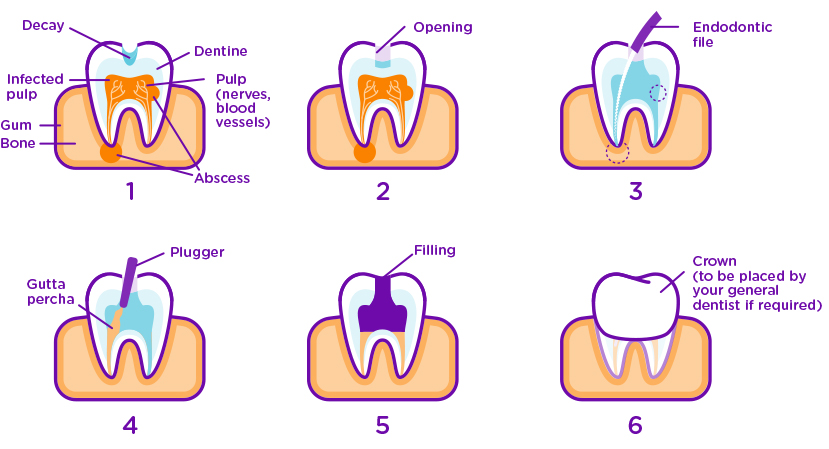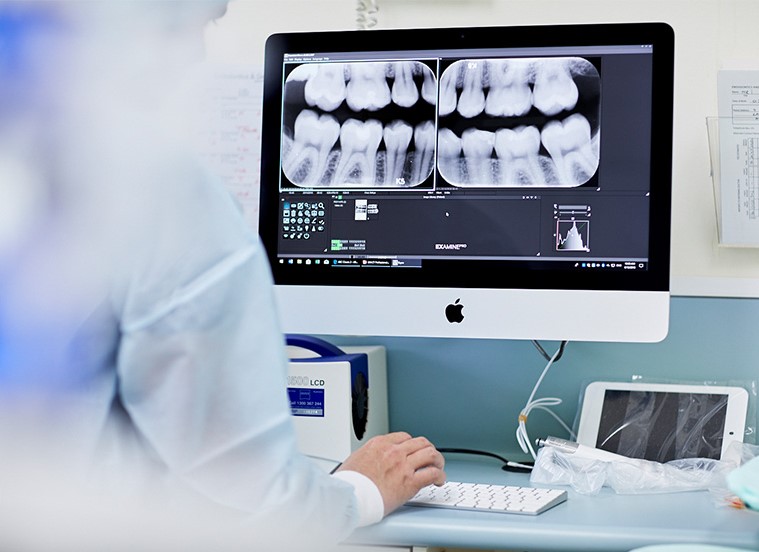You will be given a local anaesthetic to numb the tooth and the surrounding tissues.
A sheet of rubber, known as rubber dam is placed over the tooth and held in place with a small metal clip. It isolates the tooth, preventing contamination of the canals. You will still be able to breathe normally, however, it may feel a little strange for the first few minutes.
The Australian Society of Endodontology mandates that a rubber dam be used for all root canal procedures.
The Endodontist then creates a small opening into the tooth and the damaged pulp tissue is removed. The canals in the tooth are cleaned, shaped and disinfected. There will be between one and four canals depending on the tooth. All canals in the tooth need to be treated. An antibacterial and anti-inflammatory paste is then placed inside the tooth to help with healing and the tooth is sealed with a temporary filling. A metal band may need to be placed around the tooth to protect the tooth and the filling whilst under treatment. This band will remain in place until the root canal therapy is finished and the tooth is permanently restored by your own dentist. A healing period of a few weeks or months will be allowed for the infection to resolve.
The final treatment session involves filling the canal space left when the pulp was removed from the tooth. This is done to prevent re-infection. A semisolid material called gutta percha is packed inside the tooth with sealant using heat and pressure. A restorative material is then placed to seal the tooth.
A radiograph (x-ray) will be taken to check the position of the root canal filling inside the tooth, and to observe the surrounding tissues.




